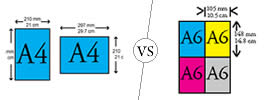Difference between NASA and ISRO
Key Difference: NASA, which stands for National Aeronautics and Space Administration, is the civilian space program and for aeronautics and aerospace research in the United States of America. ISRO, on the other hand, is the primary space agency of India. ISRO stands for Indian Space Research Organisation.
 Both NASA and ISRO are space agencies. NASA, which stands for National Aeronautics and Space Administration, is the civilian space program and for aeronautics and aerospace research in the United States of America. ISRO, on the other hand, is the primary space agency of India. ISRO stands for Indian Space Research Organisation.
Both NASA and ISRO are space agencies. NASA, which stands for National Aeronautics and Space Administration, is the civilian space program and for aeronautics and aerospace research in the United States of America. ISRO, on the other hand, is the primary space agency of India. ISRO stands for Indian Space Research Organisation.
NASA was established in 1958 by President Dwight D. Eisenhower as a plan to create a distinctly civilian (rather than military) orientation encouraging peaceful applications in space science. NASA was created by passing the National Aeronautics and Space Act, which was passed partly in retaliation to the launch of the world's first artificial satellite (Sputnik 1) on October 4, 1957 by the Soviet Union.
Since its creation, NASA can become the world’s leading agency on Space and Aeronautics. In all, NASA has launched 1091 unmanned space satellites and 109 manned missions to different planets in the solar system. Additionally, NASA was the first agency to put a man on the moon. It then created the space shuttle, which the aim of creating a reusable ship to provide regular access to space. In 2000, the United States and Russia established permanent human presence in space aboard the International Space Station, which was a multinational project representing the work of 15 nations. In 1997, Mars Pathfinder became the first in a fleet of spacecraft that planned to explore Mars. In 2011, the Curiosity rover was sent to Mars to continue the exploration of Mars.
According to NASA, it conducts its work in four principal organizations, called mission directorates:
- Aeronautics: manages research focused on meeting global demand for air mobility in ways that are more environmentally friendly and sustainable, while also embracing revolutionary technology from outside aviation.
- Human Exploration and Operations: focuses on International Space Station operations, development of commercial spaceflight capabilities and human exploration beyond low-Earth orbit.
- Science: explores the Earth, solar system and universe beyond; charts the best route of discovery; and reaps the benefits of Earth and space exploration for society.
- Space Technology: rapidly develops, innovates, demonstrates, and infuses revolutionary, high-payoff technologies that enable NASA's future missions while providing economic benefit to the nation.
 The ISRO, on the other hand, was established in 1969 under the administrative control of the Department of Space, Government of India. It superseded the Indian National Committee for Space Research (INCOSPAR). ISRO stands for Indian Space Research Organisation, which in Hindi stands for Bhāratīya Antarikṣa Anusandhāna Saṅgaṭhana.
The ISRO, on the other hand, was established in 1969 under the administrative control of the Department of Space, Government of India. It superseded the Indian National Committee for Space Research (INCOSPAR). ISRO stands for Indian Space Research Organisation, which in Hindi stands for Bhāratīya Antarikṣa Anusandhāna Saṅgaṭhana.
As compared to NASA, ISRO is younger and has not achieved as much. However, what it has achieved is still worthwhile. It built India's first satellite, Aryabhata, which was launched by the Soviet Union in 1975. In 1980, it helped Rohini became the first satellite to be placed in orbit by an Indian-made launch vehicle, SLV-3. Furthermore, it has developed two other rockets: the Polar Satellite Launch Vehicle (PSLV) for launching satellites into polar orbits and the Geosynchronous Satellite Launch Vehicle (GSLV) for placing satellites into geostationary orbits. These rockets have launched numerous communications satellites and earth observation satellite.
In 2008, India sent its first mission to the Moon, the lunar probe Chandrayaan-1. The plans for which included indigenous development of GSLV, manned space missions, further lunar exploration, mars exploration and interplanetary probes. In 2013, ISRO launched its Mars Orbiter Mission, which will enter the orbit of Mars on 24th September 2014. Furthermore, ISRO has several field installations as assets, and cooperates with the international community as a part of several bilateral and multilateral agreements with both Indian and foreign clients.
According to ISRO, its “main objective is to develop space technology and its application to various national tasks. The Space Commission formulates the policies and oversees the implementation of the Indian space programme to promote the development and application of space science and technology for the socio-economic benefit of the country.”
Comparison between NASA and ISRO:
|
|
NASA |
ISRO |
|
Stands for |
National Aeronautics and Space Administration |
Indian Space Research Organisation |
|
Other Names |
--- |
Bhāratīya Antarikṣa Anusandhāna Saṅgaṭhana |
|
Country of Origin |
United States of America |
India |
|
Established in |
1958 |
1969 |
|
Superseded |
National Advisory Committee for Aeronautics (NACA) |
Indian National Committee for Space Research (INCOSPAR) |
|
Description |
The nation's civilian space program and for aeronautics and aerospace research. |
The primary space agency of India |
|
Headquartered |
Washington, D.C., USA |
Bangalore, India |
|
Under |
Directly under the United States government |
Department of Space, Government of India. |
|
Key Achievements |
|
|
Image Courtesy: thejointblog.com, bharathijobs.com









Comments
shubham
Wed, 11/04/2015 - 16:31
Pages
Add new comment